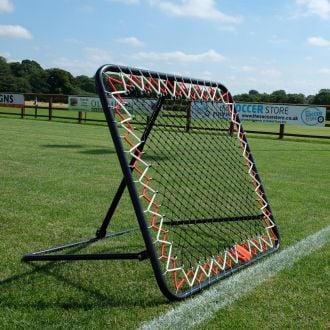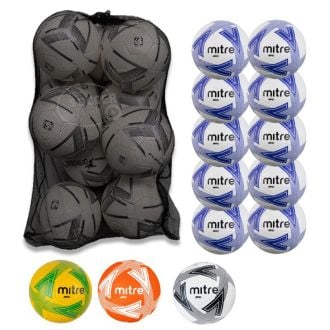How to Inflate a Football Properly
Did you ever have to make do with a partially deflated football when you were a child? If you’re of a certain age, you’ll remember such an occurrence. If only someone had a pump, eh? Because even a partially underinflated football can significantly change the way it plays. Thankfully, football pumps are cheap and ubiquitous these days. But this counts for nothing if you don’t know how to inflate a football properly.
What Are FIFA’s Regulations on Soccer Ball Pressure?
According to FIFA, a regulation football must be 8.5PSI and 15.6PSI at sea level. This is quite a large range, but different leagues and associations have specific ball pressure guidelines. The MLS, for example, stipulates that match balls should be inflated to 13PSI.
An overinflated ball poses a number of problems, but the main issue is its unpredictability. Harder to control and unpredictable, an overinflated ball moves around the air in ways that seem to defy the laws of physics. An overinflated ball, however, won’t go as far, and it probably won’t travel as fast.
This is why inflating your ball properly is vital. Not only that, properly inflated footballs tend to last longer. The 8.5PSI to 15.6PSI ball inflation range is recommended for size 3, size 4 and size 5 footballs.
How to Check Your Football’s Air Pressure
The easiest and most accurate way to check football pressure is with an air pressure gauge. Stick the pin of the gauge in the inflation hole, and turn the valve. You should get an accurate reading almost instantly — whether you’re using an analogue or a digital gauge.
If you don’t want to shell out for a pressure gauge, you can try the much cheaper (free) bounce test. Drop your ball from a height of 80 inches. If it’s close to being properly inflated, it should bounce to a height of 45 to 64 inches. Once you have a feel for a correctly inflated ball, you can simply squeeze it to check it’s right.
How to Inflate a Football Correctly
The needle of your football pump should be inserted into the ball’s inflation hole very carefully. Try to avoid inserting it at an angle, as this could result in damage to the bladder inside. If there’s resistance, try lubricated the inflation needle with some cooking oil.
Once you’re confident the needle is in place, you can start pumping air into the ball. If you have a hand pump, you’ll need good, old-fashioned elbow grease. And that’s fine if you’re just pumping up one ball occasionally.
But if you’re pumping several training balls once or twice a week, it might be worth investing in an electric football pump. Equipped with all the parts you’ll ever need to inflate footballs, this powerful gadget can inflate the average size 5 football in less than 30 seconds. It also comes with an in-built pressure gauge, so you know when to stop inflating for perfect ball performance.
Today’s footballs have a one-way valve within the inflation hole. This means air doesn’t escape when you remove the inflation needle.
Can I Deflate My Footballs?
Yes, you can deflate footballs very easily. In fact, this is something many grassroots football coaches do every week, as it saves space in bags and car boots.
For most footballs the deflation process is simple. Insert an inflation needle into the ball’s inflation hole. This will open the valve. And instead of pumping air inside, squeeze the ball hard to push the air out.
Look After Your Footballs
If you look after a modern football, it should last for months — even with regular use. So don’t play with your footballs on concrete, and never hit them against walls. If you want to practice passing and control on your own, invest in a rebounder net. Also, never stand or sit on balls, as this will permanently deform them.
Check the air pressure in your footballs regularly with an air pressure gauge. Overinflated and underinflated balls get damaged relatively quickly with normal use. Some ball manufacturers recommend deflating their footballs after every match, so make sure you check the manufacturer’s instructions before the first use.
A great football should deliver hours of match action or training time. Invest in a quality football, and look after it.





